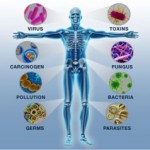Hi & Welcome back!!
I have put together a list of what I believe are the most compelling reasons for the over 30’s (not to mention over 40’s or my mob – the over 50’s) to get in shape and stay there.

In shape - but not for most of us mere mortals
Being in shape for me means that I have a low & age appropriate body Fat %, I feel strong and have muscular endurance, that I hold a reasonable cardio endurance, can touch my toes and have a good general flexibility. It is my firm belief that getting better in the these areas will see you able to live and enjoy a fuller life. (You’ll also LBN!!)
So to get or to stay in great shape her are 30 something reasons…
LBN
Let’s clear up LBN – LBN means Look Better Naked. With a lower fat percentage, some muscle and more importantly the confidence that comes with being in shape you can’t help but LBN!
Reduces Cholesterol
Increasing research is showing that this is not the bad boy it has been painted as for the last few decades, but nonetheless too much LDL (Low Density Lipoproteins) is still not a good thing to have going on and regular exercise (especially Interval style – see earlier posts) has been proven to reduce LDL levels whilst increasing HDL ( High Density Lipoproteins) – the good cholesterol.

Not everyone can get in this shape - but we can improve our own!!
You’ll Sleep Better
Lack of sleep increases the release of cortisol and cortisol promotes fat storage especially around your belly. ( no cortisol is not bad – but too much of it is!) Regular challenging exercise helps you get to sleep quicker and to sleep longer and more deeply. It also reduces the release of stress related hormones like cortisol and promotes the release of HGH ( Human growth Hormone) This hormone is often called the ‘Fountain of Youth’ hormone due to its effect on your body’s fat stores ( it cuts them) your lean tissue (you get more muscular) and your over all health.
You’ll feel better about yourself
Just working out regularly and getting in shape makes you feel better about yourself. We can’t all look like Brad Pitt in Troy or Angelina in… (Well ladies insert your favourite here!) but we CAN make of ourselves the best we can. Doing this enables to feel more in control of our lives and being in shape for ourselves will give a confidence boost.
Physical appearance isn’t everything, but by getting into better shape you’ll look better, and this will improve your confidence.
Your Blood Pressure will reduce
Stress, lack of sleep, poor diet – all contribute to high blood pressure – a recognised killer. Getting in shape not only reduces your blood pressure but can actually prevent it from either re-occurring or taking place in the first place!
Your won’t ache or hurt as much
One of the most common (and in many cases debilitating) complaints of the over 30’s ( & it sharply increases for each 5 year increment above this in the general population) is back pain – usually lower back pain. Years of sitting actually shortens certain muscles & tendons resulting in constant & additional pressure on our lumbar region. General lack of movement and no weight bearing exercise weaken muscles generally. This combines to the dreaded ‘throwing your back out’…

You won't need one of these if you are in shape...
Simply by lifting weights, moving more and sitting less can & does reduce this. Getting in shape with the strength & flexibility can eradicate it completely or at lest reduce it to more manageable levels. A large number of studies show that exercise is an effective treatment for recurrent low back pain.
You’ll suffer fewer injuries
Getting in shape & developing a strong, fit body will see your injury numbers decline severely. Not just back pain, but twisted ankles, stubbed toes, sore shoulders and neck pain – but general aches & pains all decrease the fitter and more in shape that you are.
You’ll be able to stand in the one spot longer (important in supermarkets, cinemas, at parades, in Church or just life in general…
You’ll reduce your chances of getting some types of Cancer
There are a number of studies that show regular exercise and low body fat equal a lesser chance of developing a number of cancers – particularly bowel, colon and breast cancers. In some cases the studies suggest being in shape & regularly exercising reduces some cancer risks by up to 40%.
You’ll have a faster Metabolism (my favourite)
By now you know that this blog is primarily about ways to recondition your metabolism so you shed fat, get fitter and enjoy much better health. I’m not going to labour the point here – by getting in shape will recondition your metabolism meaning that you heal faster and burn calories more efficiently & effectively. A faster metabolism carries a host of health benefits.
You’ll recapture some ‘lost’ Range of Motion
Getting in shape & working out with a strategic program will help you rediscover the joys of being able to

Range of motion - not everyone wants this much, but you can get more...
touch your toes, scratch your back and other many other lost ranges of motion.
Nowhere else is it truer that if you don’t move it you’ll lose it as in the area of flexibility.
Becoming more flexible reduces joint stiffness, can assist with arthritis pain and also adds to reducing injury occurrence.
Your Functional Strength will improve
Functional strength is one of those terms that has become more of a marketing handle than a real descriptor of a real thing. However true functional strength means that you have the strength & power to do the things you need to each day in your life.
It can be carrying groceries, lifting a child, getting out of a chair, digging a garden bed, riding a bike, painting a ceiling, push starting a car or… you get the idea.
Being in shape improves your quality of life because you have the ability to do the things in your life.
You’ll improve your Insulin Sensitivity
Insulin sensitivity is the degree to which your body (primarily muscles) is able to receive and glucose from your bloodstream. Insulin resistance means that more & more insulin has to be released by the pancreas leading to increased fat storage, or in extreme cases (which are becoming less rare in these days of obesity) a loss of the ability to produce sufficient insulin at all. Yep – dose dependent diabetes…
Being in shape with a more efficient metabolism & lower body fat improves insulin sensitivity and can prevent the development of type 2 (often called adult onset) diabetes.
You can find a few out of the 168 hours each week to get in shape
With 168 hours each and every week we can all find 3 or 4 of these to use to get in and stay in shape. The benefits are too many to ignore and the results too important to miss out on because ‘Dancing with the Stars’ is on.
If you have to, make your workouts an appointment in a diary. Just find the time…
You’ll have a higher desire for Sex
No not enough that you’ll develop sex addiction, but being in shape & LBN certainly raises the sex drive of both males & females.
Part of it is better circulation, part of it is increased body awareness and feeling more in control of your body and a large part of it is improved hormone health. Regardless – getting or being in shape certainly improves the bedroom…

Heart Atack and more diseases either in progress or about to start...
You’ll Decrease your Risk of Heart Disease
Challenging exercise exercises the heart like any other muscle and like any other muscle regular exercise improves the hearts strength & responsiveness to the demands placed on it.
Contractile strength improves and with higher HDL & lower LDL your risk of heart disease drops. A lot.
You’ll get a kick out of exercise
Challenging exercise releases a number of ‘feel good’ hormones (think runners high) that elevate our mood, lift depression, decrease the effects of stress and poor sleep and have been proven to make us happier.
This effect is even more marked when you make at least a part of your exercise program an activity that you love to do. It can be ballroom dancing, squash, tennis, a martial art, yoga – whatever. When you have at least 1 regular activity of your exercise program as something you love you overall enjoy getting & staying in shape more. And you smile more – a lot more.
You’ll likely live longer
Folk who are in shape tend to live longer, have better health and less disease & injury. At the very least they experience a better quality of life.
You’ll develop (rediscover) better balance and Coordination
This sort of ties in with suffering less injuries if you are fit – but if you are in shape & working out regularly your kinaesthetic awareness (your mental awareness of your body’s place in the space around it) improves. You’ll trip less often, bump into less and find that you drop things less often.

Well maybe not this much more balance (unless you want to work for it!!)
Even better – for the older ones of us – you’ll be less likely to fall – and for anyone in their late 50’s on falls is a major health problem …
You’ll reduce your chance of Osteoarthritis
Weight bearing exercise coupled with moving more means stronger bones. Period. Calcium supplements have their place and so does diet but if you want strong bones move some weight and get stronger than you are today.
Your gut will work better
Getting in shape means more efficient processing of the food you eat. It means reduced risk of ‘over 40’s’ diseases such as diverticulitis, gastrointestinal haemorrhage, and inflammatory bowel disease; for everyone else it means a decreased incidence of constipation.
Getting in shape is not just for cosmetic external purposes – a reconditioned metabolism means everything works better.
Your weight will change
Getting in shape means dropping body fat and developing some muscle. Scales don’t count because muscle weighs more than fat, but the mirror, your partner’s reactions and how your clothes fit do.
Your body will use more fat as fuel
Regular exercise tends to improve your body’s ability to use fat as fuel. This is a good thing as is unfit folk our bodies have a tendency to store fat and breakdown muscle for fuel once glucose is depleted.
Even better – unhealthy fat stores like belly rolls and love handles, visceral (internal) fat can not only be prevented but heavily reduced if not wiped out by getting in shape.
You’ll get sick less often

Your entire Immune System will improve...
Being fit means a stronger immune systems and this translates into less illness – fewer colds, quicker recovery from the ‘flu and generally better health.
You’ll focus better
Another truth about moving into the above 30 age bracket – our ability to focus , concentrate and multitask begins to drop. A lot. By your 50’s it can be beginning to become a real issue.
A better supply of oxygen & nutrients to the brain due to improved circulation from regular exercise not only arrests this mental decline, but can on occasion reverse it.
You’ll have loads more energy
Exercising regularly improves your body’s utilisation of food and the performance of its various energy systems. Net result? A real increase in energy levels.
More energy means better quality of life and more engagement in living – to good to miss!!
You’ll reduce the chance of developing Alzheimer’s

Remeber when you had this much energy??!!
Although this is likely tied to improved circulation of oxygen & nutrients to the brain, getting in shape through challenging & regular exercise appears to keep your brain sharper and may reduce the chances of you developing not only Alzheimer’s disease but a number of other dementia type mental disorders.
It may be tied to the improved circulation and the increased amount of mental awareness required to partake of exercise or other physical activities. There is even some talk of the feel good hormones also playing a role…
In any case the research is ongoing but is too good to ignore.
You’ll feel like you are reaching your potential
Being out of shape, fat, flabby and out o breath with no strength means that you cannot possibly be at your best. The world is a nastier place when you are out of shape and your internal landscape can come to resemble your outer one. Not healthy – physically or mentally.
By getting in shape, reconditioning your metabolism and losing ft you transform into you Ver 2.0 – a better version of yourself.
The Greeks used to say ‘Healthy body, Healthy mind’ – and the more we learn about how our bodies work and how they integrate with our emotions and thought process the more correct the Greeks seem to be.
Undertaking a physical transformation will improve your mental, emotional, and spiritual state; and upgrade your quality of life.
From the appearance of your skin, to your overall body shape, to how well your metabolism works, how you think or shrug off illness – just about every physical attribute you posses gets better when you’re in shape.

Set them up for a better quality of life
You’ll set a good example for your kids (or grandkids, or…)
By taking charge of your shape & fitness and being committed to it you will also help your kids to develop similar habits. Being in shape has so many health benefits that if you can influence by example your children you could literally be reducing the amount of stress, pain & illnesses that they will suffer in their lives. A helluva a good reason to get & stay in shape as far as I am concerned…
(If you like this list and have sedentary friends then shoot them a copy of this blog – it just might get them moving.)
Please leave a comment below and I’ll see you next time…









